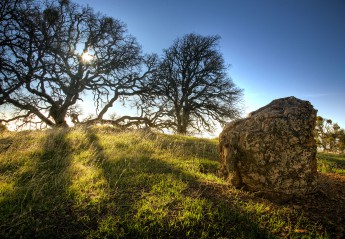Dreaming the Keepara: New South Wales indigenous cultural perspectives, 1808-2007
Institution:University of Newcastle. Academic Division, The Wollotuka Institute
This interdisciplinary study investigates the Aboriginal intellectual heritage of the Mid North Coast of New South Wales, through a combination of family history, oral tradition, and audio-recorded songs, stories, interviews, discussions, and linguistic material. This research has uncovered an unsuspected wealth of cultural knowledge, cultural memory, and language heritage that has been kept alive and passed down within Aboriginal families and communities, despite the disruptions and dislocations endured over the past seven generations. This study’s findings are presented in three interrelated forms: a dance performance that incorporates traditional and contemporary songs, stories, and lived experiences of an Aboriginal extended family; an oral presentation within the framework of Aboriginal oral transmission of knowledge and this written exegesis, which is itself an experiment in finding pathways for the expression and progression of Aboriginal knowledge within the context of academic discourse. The theoretical framework of this work is grounded in my personal experience of Aboriginal traditions of knowledge production and transmission, maintained through everyday cultural activities, family memories of traditional education, and our traditional and present-day language forms and communicative practices. The performance, oral and written components connect this intellectual and cultural heritage with historical and photographic documentation, linguistic analyses, and audio recordings from my grandfathers’ and great-grandfathers’ generations. The written component establishes the background to the study, and reviews relevant literature with a prioritisation of Aboriginal voices and sources of knowledge, both oral and written. It explores aspects of my family history from the early 1800s to the present, including my childhood and early educational experiences and leads on to a detailed look at the work of my late father, Raymond Shoonkley Kelly in documenting and maintaining out intellectual and cultural heritage through the NSW Survey of Aboriginal Sites. The final part of this study focuses on language, which is central to all of the preceding investigation. This work demonstrates how operating from an Aboriginal knowledge base allows us to see beyond surface differences in spelling and pronunciation, to reach a deeper understanding of the cultural meanings and ways of speaking that have allowed us to preserve and maintain out cultural integrity. This knowledge base also enables the linguistic unpacking of previously unanalysable song material from the audio recordings. Indigenous people in New South Wales are continuing to engage in a cultural and political struggle to maintain and protect our identity in the face of an ever-present threat of assimilation by the mainstream Australian society. The success of our struggle will depend significantly on our ability to keep our language and our intellectual heritage alive.
Keywords dreaming; Keepara; Aboriginal Reserves; indigenous cultural perspectives; Aboriginal; Aborigine; Dreamtime; race relations; Aborigines protection board; Aboriginal Welfare Board; Aboriginal Missions

